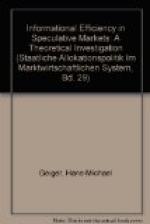|
This section contains 394 words (approx. 2 pages at 300 words per page) |
World of Scientific Discovery on Hans Wilhelm Geiger
Geiger was born in Neustadt an der Haardt (now Neustadt an der Weinstrasse) on September 30, 1882. After brief military service, he studied physics at the universities of Munich and Erlangen. In 1906, he received his doctoral degree from Erlangen.
After graduation, Geiger accepted a research position at the University of Manchester, where he stayed until the beginning of World War I. At Manchester, he worked with Ernest Rutherford on the properties of alpha rays and alpha particles. In 1908, the two researchers developed a method for determining the nature of the alpha particle. Preliminary studies had convinced Rutherford that the alpha particle was either a singly-charged hydrogen molecule or a doubly-charged helium atom. The 1908 research was designed to choose between these two alternatives.
Alpha particles were allowed to pass into a glass tube containing a conducting wire running down its middle. Each alpha particle entering the tube collided with an ionized gaseous atom in the tube. The ions produced in this collision then collided with and ionized other atoms. The "avalanche" of ions thus produced by a single alpha particle was sufficient to cause a brief electrical current in the central wire. The current was used to activate a counter.
This device allowed Rutherford and Geiger to determine both the total number of particles entering the tube and the total electrical charge they carried. Simple mathematical calculations from these data revealed that alpha particles are doubly-charged helium atoms, that is, helium nuclei.
Upon his return to Germany, Geiger continued to work on the detecting tube developed at Manchester. By 1912, he had produced a device that could count beta particles as well as alpha particles. Geiger had produced the design of a counter that is even today one of the most common and effective of all particle-detecting devices, the Geiger counter.
Geiger held a number of teaching and research positions in Germany. He was head of the Radioactive Laboratories at the Physikalisch Technische Reichsanstalt in Berlin (1912-1925), professor of physics at the University of Kiel (1925-1929) and at the University of Tübingen (1929-1936), and head of the physics department at the Technical University of Charlottenberg-Berlin (1936-1945). He worked briefly on Germany's atomic bomb program during World War II. But he was in ill health and, after losing his home in Babelsberg during the Allied occupation, he fled to Potsdam. He died there on September 24, 1945.
|
This section contains 394 words (approx. 2 pages at 300 words per page) |


